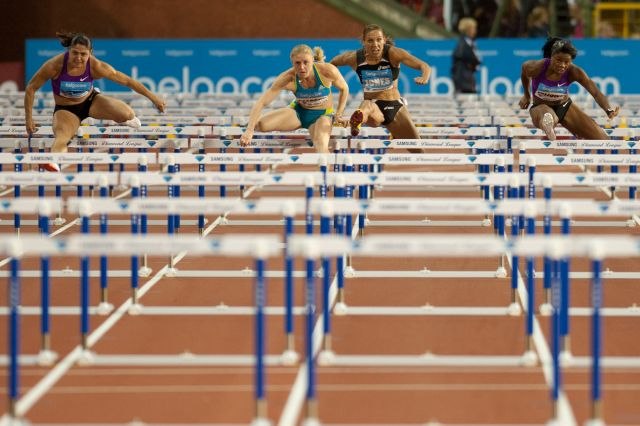The 110 metres hurdles, or 110-metre hurdles, is a hurdling track and field event for men. It is included in the athletics programme at the Summer Olympic Games. The female counterpart is the 100 metres hurdles. As part of a racing event, ten hurdles of 42 inches (106.7 cm) in height are evenly spaced along a straight course of 110 metres. They are positioned so that they will fall over if bumped into by the runner. Fallen hurdles do not carry a fixed time penalty for the runners, but they have a significant pull-over weight which slows down the run. Like the 100 metres sprint, the 110 metres hurdles begins in the starting blocks.
A 110m hurdles heat of the Decathlon at Osaka 2007
A 110m hurdles race at the 2021 Creekside Friday knight invite
Hurdling is the act of jumping over an obstacle at a high speed or in a sprint. In the early 19th century, hurdlers ran at and jumped over each hurdle, landing on both feet and checking their forward motion. Today, the dominant step patterns are the 3-step for high hurdles, 7-step for low hurdles, and 15-step for intermediate hurdles. Hurdling is a highly specialized form of obstacle racing, and is part of the sport of athletics. In hurdling events, barriers known as hurdles are set at precisely measured heights and distances. Each athlete must pass over the hurdles; passing under or intentionally knocking over hurdles will result in disqualification.
Leon Okafor of Austria runs a hurdle at a 2018 event in Linz.
The final of the men's 110 metre hurdles at the 1912 Summer Olympics
A sequence of hurdling
100 m hurdles at the 2010 Memorial Van Damme. Priscilla Lopes-Schliep, Sally Pearson, Lolo Jones and Perdita Felicien






